There are numerous services available on the web for managing your personal finances. Although they may be convenient, they also often mean leaving your most valuable personal data with a company you can’t monitor. Some people are comfortable with this level of trust.
Whether you are or not, you might be interested in an app you can maintain on your own system. This means your data never has to leave your own computer if you don’t want. One of these three apps might be what you’re looking for.
HomeBank
HomeBank is a fully featured way to manage multiple accounts. It’s easy to set up and keep updated. It has multiple ways to categorize and graph income and liabilities so you can see where your money goes. It’s available through the official Fedora repositories.
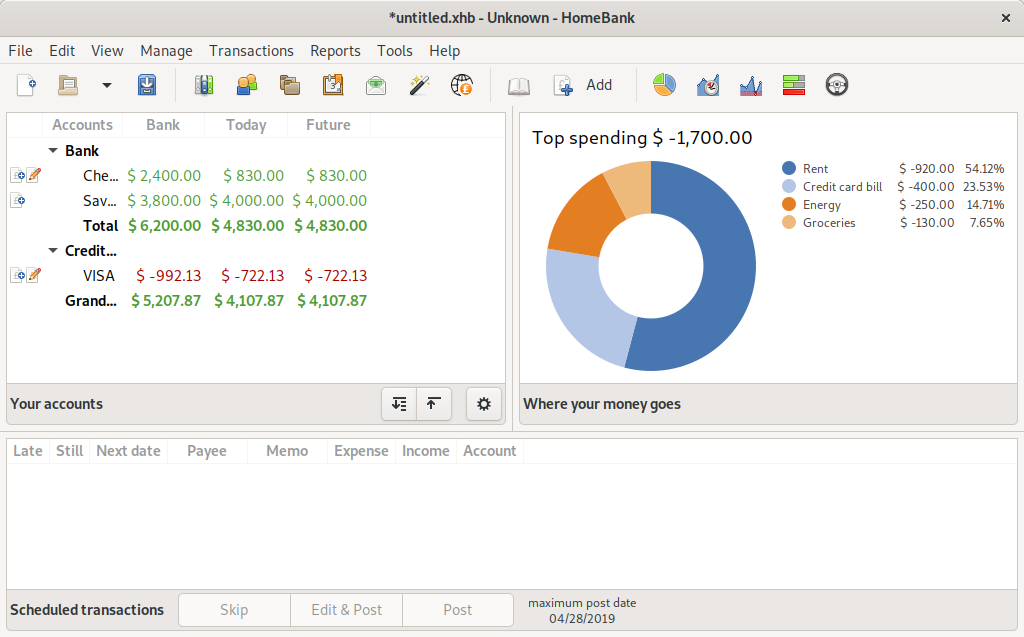
To install HomeBank, open the Software app, search for HomeBank, and select the app. Then click Install to add it to your system. HomeBank is also available via a Flatpak.
KMyMoney
The KMyMoney app is a mature app that has been around for a long while. It has a robust set of features to help you manage multiple accounts, including assets, liabilities, taxes, and more. KMyMoney includes a full set of tools for managing investments and making forecasts. It also sports a huge set of reports for seeing how your money is doing.
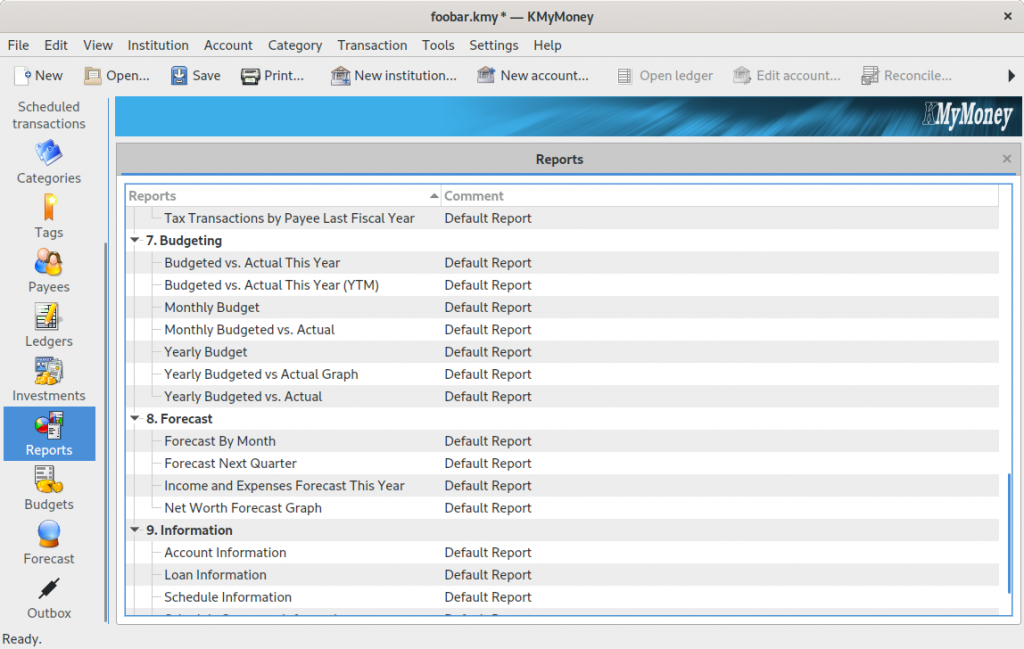
To install, use a software center app, or use the command line:
$ sudo dnf install kmymoney
GnuCash
One of the most venerable free GUI apps for personal finance is GnuCash. GnuCash is not just for personal finances. It also has functions for managing income, assets, and liabilities for a business. That doesn’t mean you can’t use it for managing just your own accounts. Check out the online tutorial and guide to get started.
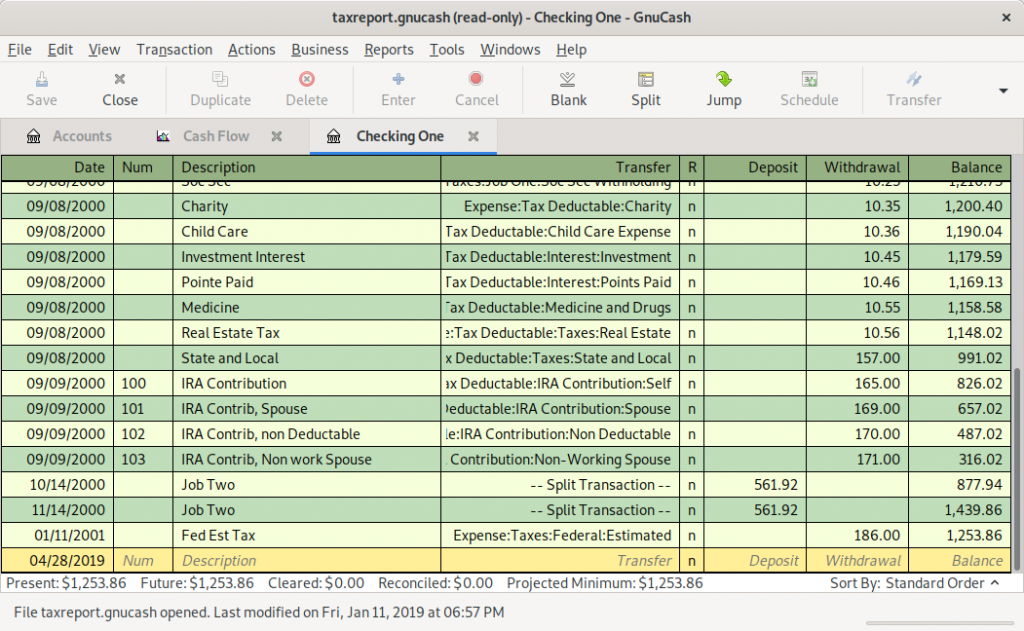
Open the Software app, search for GnuCash, and select the app. Then click Install to add it to your system. Or use dnf install as above to install the gnucash package.
It’s now available via Flathub which makes installation easy. If you don’t have Flathub support, check out this article on the Fedora Magazine for how to use it. Then you can also use the flatpak install GnuCash command with a terminal.
Photo by Fabian Blank on Unsplash.

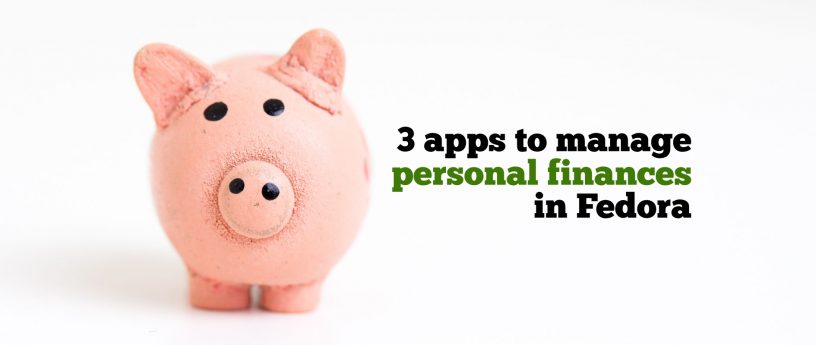


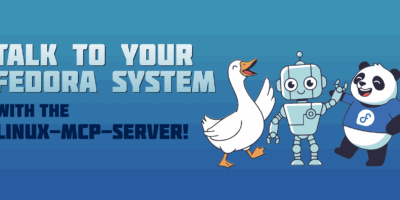

Yazan Al Monshed
Nice Blog. Thank you
Ph0zzy
There is a better way to install homebank:
https://flathub.org/apps/details/fr.free.Homebank
Use flatpak, Luke!
Paul W. Frields
@Ph0zzy: Fixed! Thanks for the tip. For some reason it wasn’t showing up in Software for me, but appears fine now.
Michael Carpino
Been using KMyMoney for a few years now after converting from Quicken. I first tried GnuCash but found it to be a little more cumbersome to use as compared to KMyMoney. KMyMoney is feature rich and runs faster than Quicken when the database becomes larger. I will never go back to Quicken after using KMyMoney.
Connie Kaiser-Pereira DC
Thank you
Jens Petersen
We also have hledger in Fedora if you like command-line interface.
Cyril
What’s about Grisbi ?
http://en.grisbi.org/
RolandC
I have only tried GNU Cash out of those three, but I can recommend it and only it, by far. GNU Cash is the closest piece of software to Quicken you could ever find.
I have managed my personal finances on it for almost three years now, without any real trouble. Beware though, unless you work as an accountant, read at least about basic principles as described at the beginning of the documentation so you avoid frustration later on. Enjoy!
Drakkai
Hombank the best 🙂
bill
Probably worth noting that you have also listed them in order of complexity/learning curve.
Kiuj
Thank you. Hombank the best
jesse
I am having a hard time choosing between KmyMoney and Gnucash.
I have used both and I think both have strenghts and weaknesses.
KMyMoney lets you input transactions with a Payee, Category, and you can tag transactions. KMM, keeps a list of the tags you have created, a list of the Payees you have, and a list of Categories. You can report on Transactions by Payee, by Category, by Account(for Assets/Liabilities). It features tons of reports. Although nice, these are not GAAP type reports. For example Cash Flow in KMyMoney is not the same as a Statement of CashFlows, AKA CashFlow Statement. Although KMyMoney is a double-entry system, the reports do not show the Debits and Credits as being you would expect from a double-entry system. Debits in one column, Credits in another. It seems to use Double-Entry as the balancing equation but does not fully implement it down to the reporting methods GAAP would ask. I wish it would as it would then fit all scenarios. I don’t want to see negative values in my reports such as liabilities having negative values vs Assets having positive values. They should all be absolute values in reporting(meaning unsigned).
Gnucash, althought harder to grasp than KMyMoney, and really only because you have to consider Expense/Income Categories are actually Accounts in GnuCash. Where in KMyMoney they are simply Categories without an Account. GnuCash keeps to the Business GAAP requirements of having Accounts, not Categories. GnuCash features tons of reports that can help your business, and you, grow. If you have an accountant, they will love the output of GnuCash since it already breaks information down to the type of reports they expect to produce in GAAP fashion. Gnucash does not keep a list of Payees, allow for Tags. It allows for ‘Categories’ but it implements them as Accounts.
Reporting wise, both have the benefits. KMM has very flexible reports, GnuCash has fewer options to configure and you cannot do a side by side comparison by month or year easily. In KMM, this is an easy thing to do. In GnuCash, you have to generate thereports by year or month, and then export it to excel to see a side by side comparison of the numbers. GnuCash does offer a graph that shows you the growth trend, but you cannot see the numbers side by side. If it had that, it would be perfectly ideal.
Michael Andrews
I’ve been using KMyMoney for over eight years now and can highly recommend it. I was a Quicken refugee and found it the easier to understand than GnuCash.
Connie KAISER-PEREIRA DC
Thank you for SHARING $$$$
CJung
No Skrooge mention?
I use it for 10 years and it rocks!